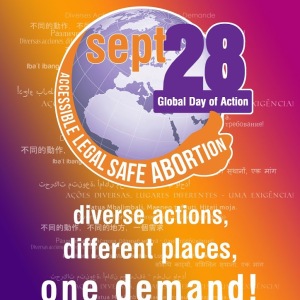
Last week, we blogged about the evolution—and bifurcated state of—sexuality education in the United States, especially in light of President Barack Obama’s proposed budget cuts to abstinence-only education programs. In the coming months, it will be interesting to see how his proposal shapes sex education curricula going forward.
But what about sex ed around the rest of the world? The United Nations Organization for Education, Science and Culture (UNESCO) gives us a glimpse with their global report on the status of comprehensive sexuality education (CSE) implementation and coverage. In their report, the authors draw upon information about the status of CSE in 48 countries, generated through an analysis of already existing resources and studies.
Our Assumptions About Sex Education Around the World
With all of the limitations that have been placed upon sexuality education programs in the United States, it has become quite common to imagine all other countries as being far more open-minded. But are these beliefs well-founded? The answer: it depends.
In those countries in which religion plays a large part in cultural attitudes and behaviors, sexuality education can be just as fear-based as it so often is in those American school districts that have adopted abstinence-only education programs. And in developing countries, that’s just where the funding is. True Love Waits, for example, a faith-based approach to sexuality education, is U.S.-based, but has also become popular in other countries.
UNESCO is working to provide standalone sexuality education programs around the globe, and is also trying to figure out out how to weave this necessary information into biology and other courses. But it can be difficult to get these resources to those who need them—and to have teachers trained—in areas in which the funding for such work is low.
UNESCO’s Global Report
While such efforts are a work in progress, though, it’s already possible to see the effects CSE has had around the globe. And in fact, there is clear evidence that CSE has had a positive impact on sexual and reproductive health, “notably in contributing to reducing STIs, HIV and unintended pregnancy.”
In their report, the authors cover the manifold benefits of CSE, and the clear demand for comprehensive sexuality information that exists from younger populations. They then go on to look at how we can adapt CSE content for varying populations, developing curricula, affecting policy changes around sex education, and training teachers.
The UNESCO report also contains a number of case studies of this type of work in action in Zambia, the United Kingdom, and other countries.
“Young people are … often denied even the most basic information about their sexual and reproductive health and rights,” said Senior Programme Specialist in Health Education at UNESCO, Joanna Herat, in a press release. “Thankfully, a global movement has galvanized around ensuring universal access to CSE, with youth-led movements calling for stronger responses, and sustained commitment. This has played a major role in the scaling-up of sexuality education and sexual and reproductive health services globally.”
Still, Herat acknowledges that we still have a ways to go. The report itself stresses the importance of stronger teacher training programs, in addition to the necessity of engagement and support from both parents and their communities at large.
As much work as this requires, however, the shifting statistics on STIs, HIV, and unintended pregnancies shows that things are moving in the right direction.
(image by Kenneth Lu, via Flickr)





